Ethical Elegance: Why Lab Grown Diamond Necklaces Are a Smart Choice
A diamond necklace is the kind of accessory that can make you feel like you’ve just stepped out onto the red carpet, even when you're in denim popping into the neighborhood coffee shop. Either way, it says you're definitely too busy being fabulous to notice the onlookers. A diamond necklace can go with anything, whether you're channeling Beyoncé, the classic Audrey Hepburn, or a casual(ish) Kardashian. They are timeless, sophisticated, and rock a whole lot of swagger. Diamond necklaces can also be expensive. But we've got your back. Enter: Lab-grown diamond necklaces, to make these precious gems more accessible, ethical, and environmentally friendly.
Whether you're treating yourself to a stunning diamond solitaire pendant or gifting a tennis necklace to celebrate a major milestone, there are countless ways to rock a lab-grown diamond necklace at a fraction of the cost of a natural diamond necklace. So sit back, relax, and explore everything these modern marvels have to offer.
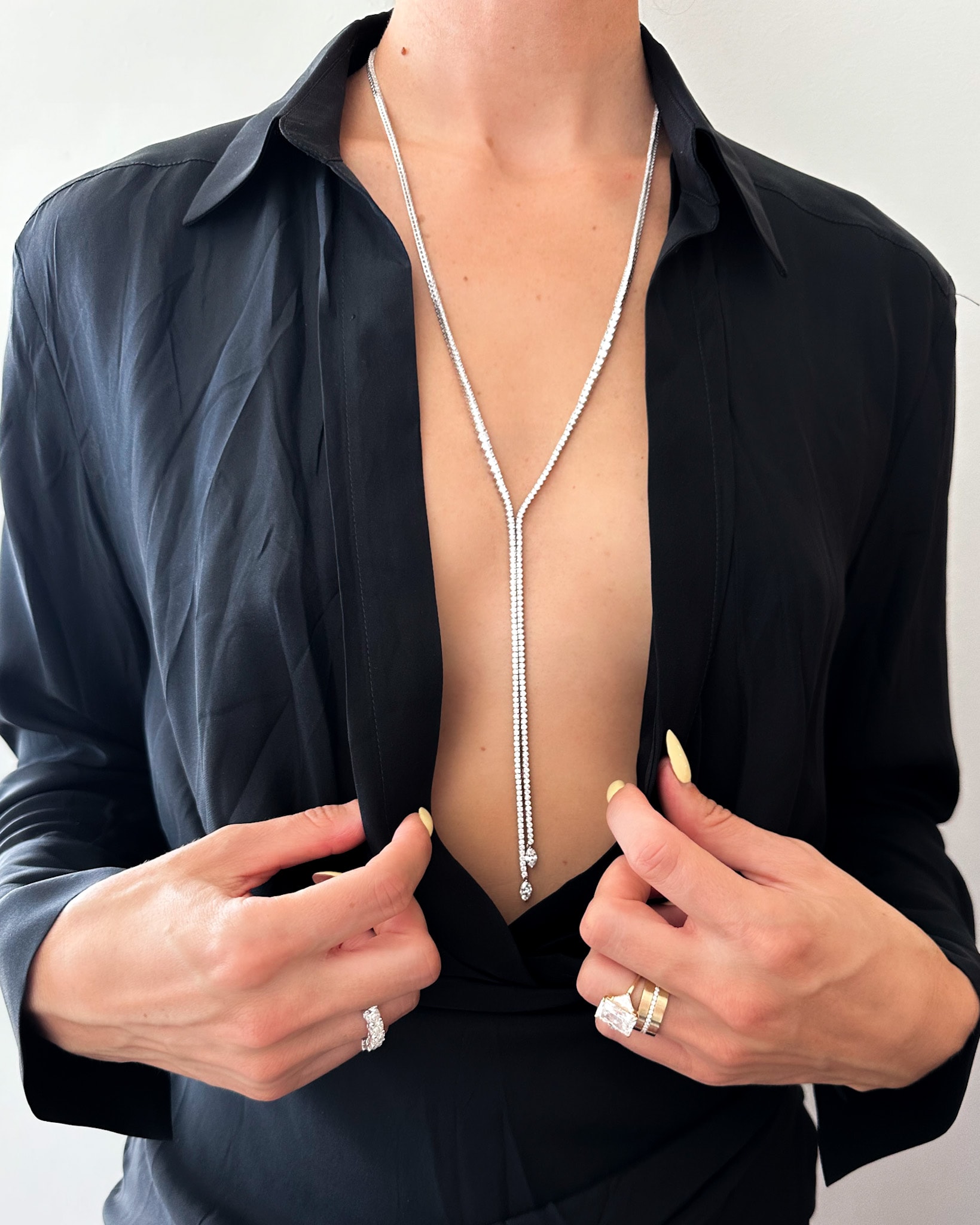
Dazzle with elegance in the, Diamond Bolo Lariat Necklace (14.50 carat).
What Are Lab-Grown Diamonds?
Natural diamonds are formed deep within the Earth, where carbon atoms are subject to very high heat and pressure before being launched to the surface through volcanic activity. They're then mined from the ground, cut, polished, and set into beautiful jewelry for the masses. But this is a super labor-intensive process and finding high-quality diamonds is surprisingly rare, making them quite expensive.
Lab-grown diamonds, aka synthetic or cultured diamonds, are instead created in a high-tech laboratory using advanced processes that mimic the natural formation of diamonds. Lab diamonds are composed of the same carbon atoms arranged in the same crystal structure, making them identical to natural diamonds in terms of their chemical, physical, and optical properties. Truly, you can't look at them and see the difference because there really isn't one.
There are two main methods for creating diamonds in a lab: High Pressure High Temperature (HPHT) and Chemical Vapor Deposition (CVD). Each produces high-quality diamonds, but CVD is particularly popular for its ability to create larger, gem-quality stones fit for fine jewels.
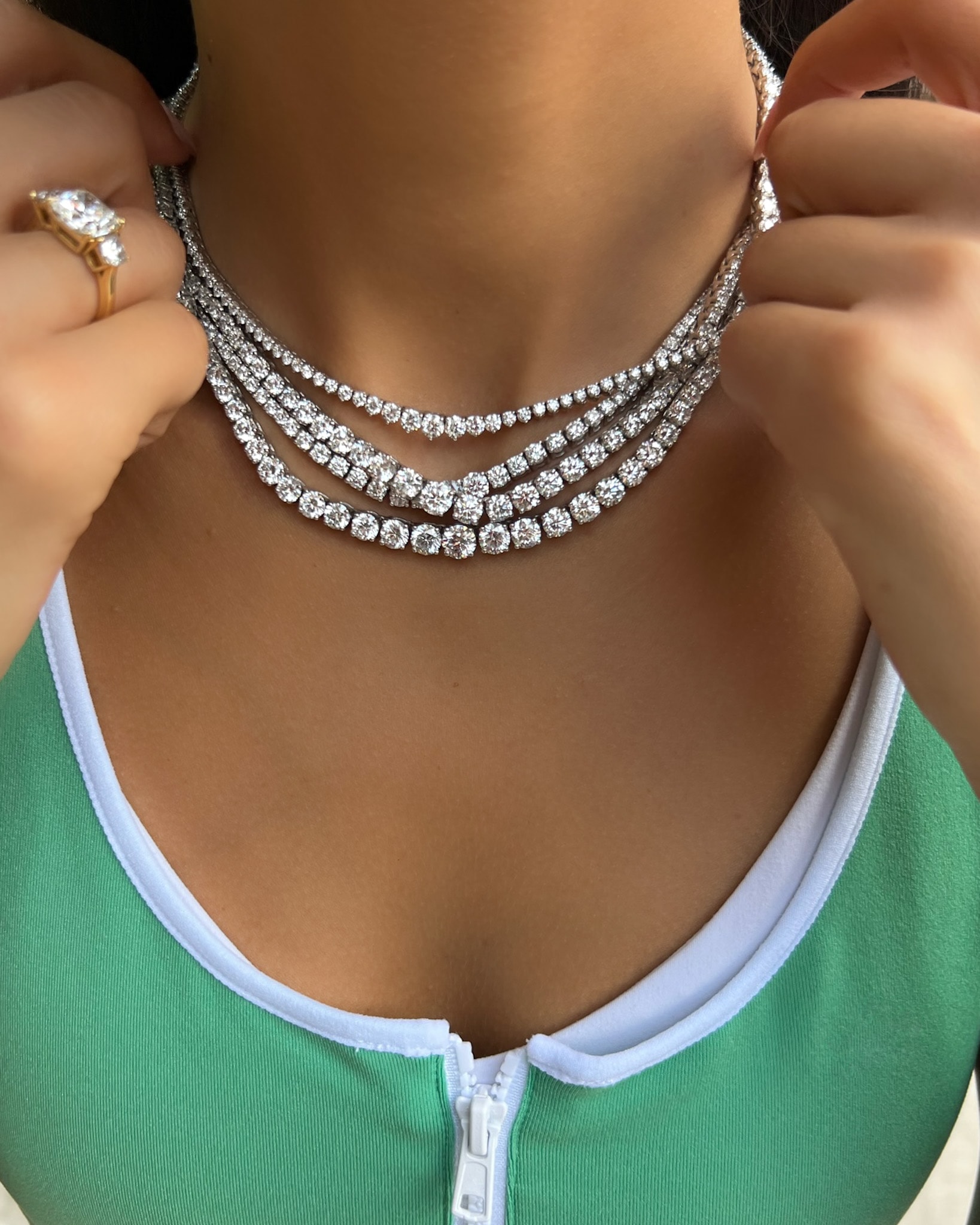
Lab-grown diamond tennis necklaces let you shine bright without breaking the bank.
Why Choose Lab-Grown Diamond Necklaces?
If they're so the same, then what advantages to lab-grown diamonds really have over their natural counterparts? Here are a few:
-
Ethical and Environmentally Friendly: A more sustainable choice, lab-grown diamonds have a smaller overall footprint than mined diamonds. They still use energy but it's lower than the land, water, and carbon footprint of natural diamonds. Lab-grown diamonds are also an ethical choice for anyone concerned with conflict diamonds.
-
Cost-Effective: Lab-grown diamonds are less expensive than comparable natural diamonds, often by about half the price. That means you can spend your budget on a larger or higher quality diamond for the same price. Or go on a fancy honeymoon. The choice is yours.
-
Quality and Beauty: Lab-grown diamonds are virtually indistinguishable from natural diamonds. They possess the same exceptional brilliance, fire, and sparkle you're looking for. They are also available in all the same shapes, sizes, and colors, and can even be crafted to your specifications!
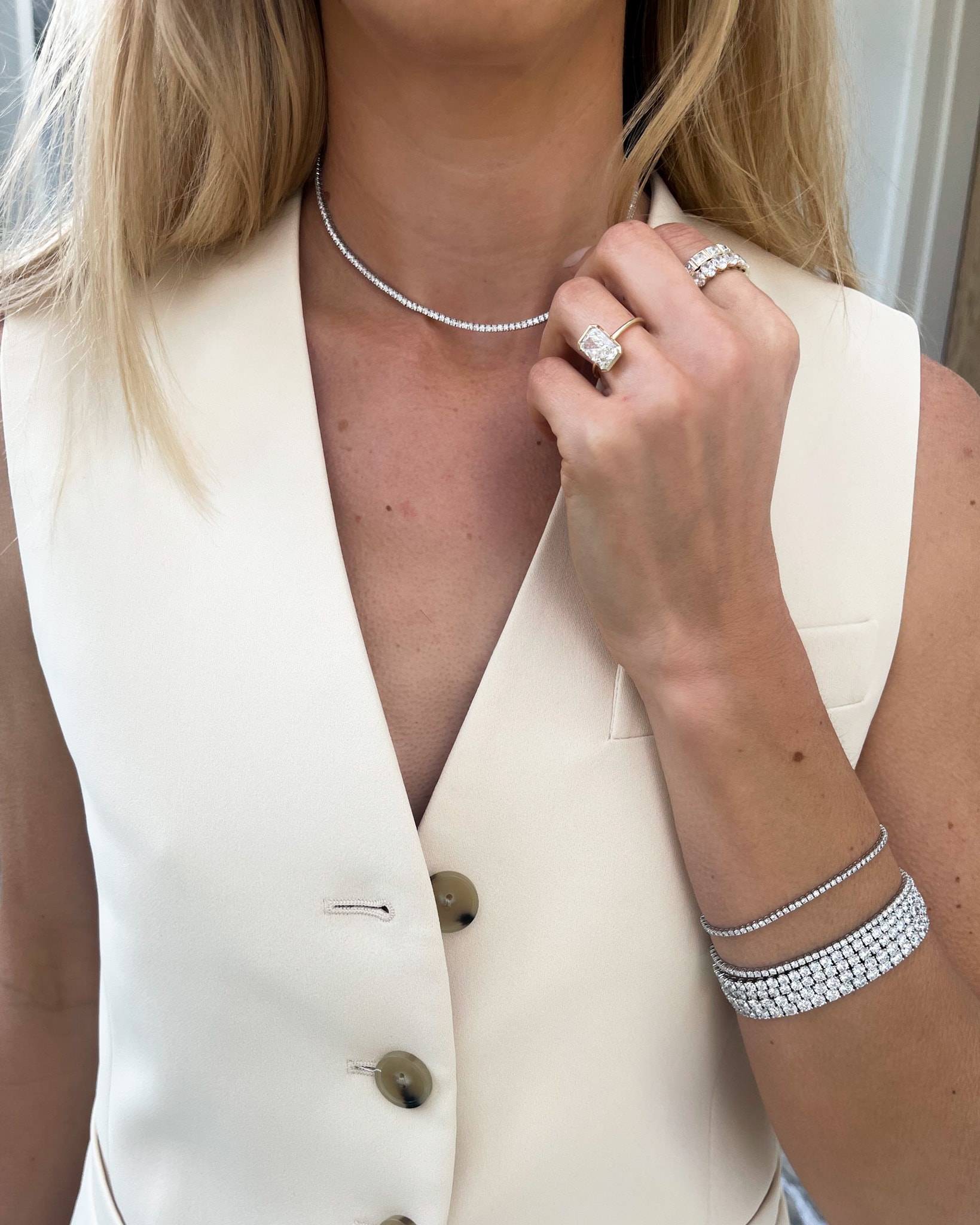
With lab-grown diamond necklaces, you don't have to sacrifice quality for affordability.
The 4Cs of Lab-Grown Diamonds
All diamonds, whether they're natural or lab-grown, are evaluated based on the 4Cs—cut, color, clarity, and carat weight. These factors are used by the industry to determine a diamond's quality and also its price. It's important to understand the 4Cs when making any diamond purchase.
-
Cut: The most important of the 4Cs, cut has the biggest impact on a diamond's overall beauty—its brilliance and sparkle. A well-cut diamond will bounce light all around the room, while a poorly cut diamond will just look like a dull rock. A well-cut diamond can also help disguise clarity and color and even make a diamond look bigger!
-
Color: Diamond color is the second most noticeable trait, and is graded from D (colorless) to Z (light yellow or brown). Beyond that range are what we call fancy color diamonds, like yellow, blue, and pink. If you want a super white diamond, you're going to want to shop in the D-F color range, however, don't overlook warmer tones or champagne diamonds for a beautiful, unique look.
-
Clarity: Clarity is all about diamond inclusions, their size, number, type, etc. And almost every diamond has some. Despite their prevalence in pop culture, flawless diamonds are exceptionally rare. We often recommend shopping for an "eye-clean" diamond to balance quality and budget. That means a diamond that has inclusions but they're not visible to the naked eye.
-
Carat Weight: Carat weight measures the physical weight of a diamond, not its size (though it can give you some idea of how large a stone is). Again, a higher carat weight but poorly cut diamond won't sparkle like you'd expect. It's important to balance size with the other Cs to make sure you get a spectacular-looking stone.
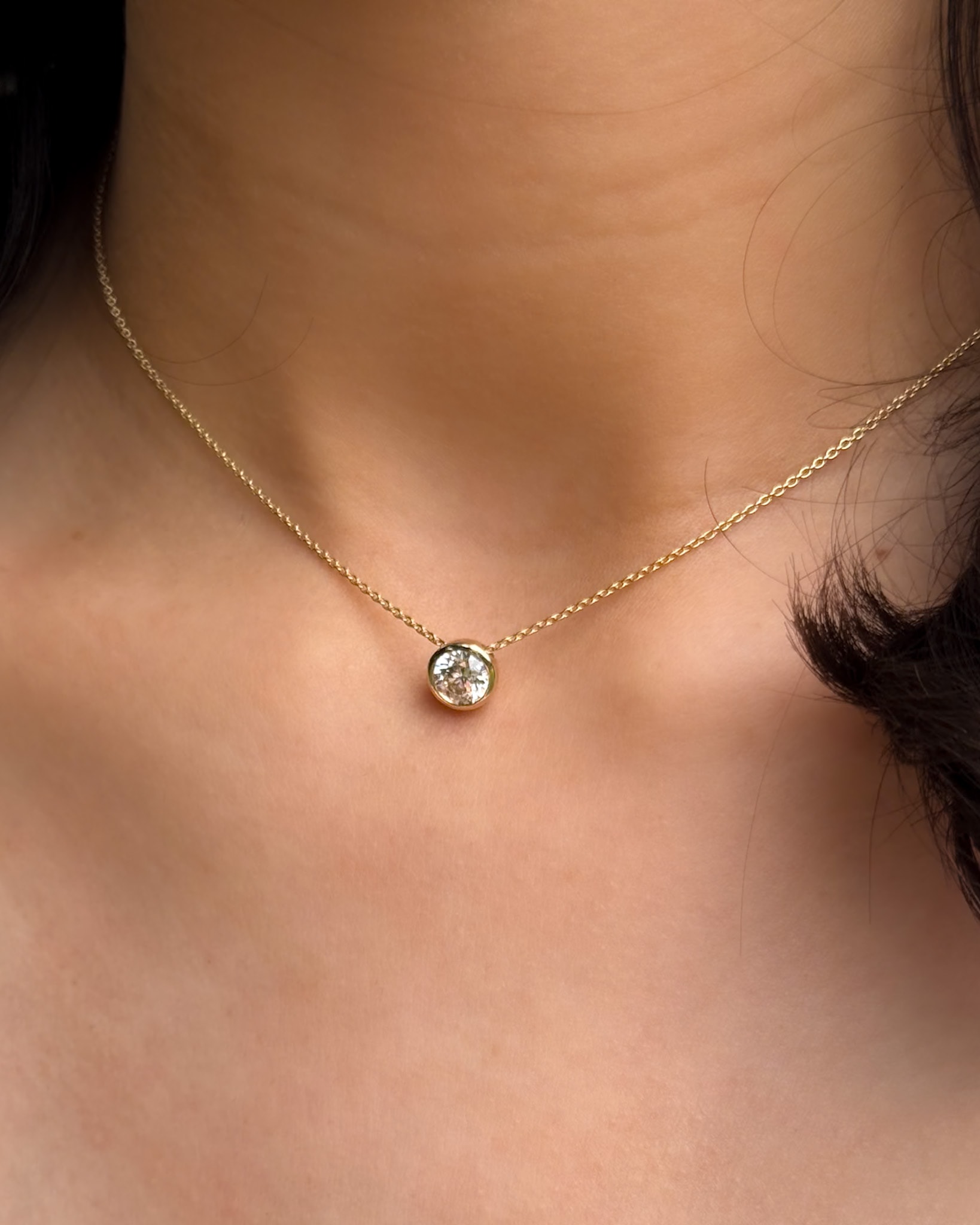
The perfect addition to your collection, Bezel Pendant Necklace with a Round Cut Diamond.
Style Decisions for Lab-Grown Diamond Necklaces
Do you want a single diamond on a chain? An entire row wrapped around your neck? Lab-grown diamonds can be incorporated into any style of necklace a natural diamond would be, each with its own charm and appeal. You can choose your metal color: yellow gold, white gold, rose gold, or even platinum. You can choose your total carat weight. You can choose your diamond shape. But here are a few terms to know before diving in:
-
Solitaire Pendant: A total classic, solitaire pendants feature a single diamond suspended from a chain. It can be any diamond shape, size, or color, and a variety of setting styles including prong set, bezel set, or a halo setting where your diamond is surrounded by smaller stones. The simplicity of a diamond solitaire pendant allows the diamond's beauty to take center stage.
-
Three-Stone Necklace: Symbolizing the past, present, and future, three-stone necklaces feature three lab-grown diamonds set in a row. Typically the center stone is larger and the two side stones are slightly smaller. This design is both elegant and meaningful, making it a popular choice for significant milestones and anniversaries.
-
Tennis Necklace: A tennis necklace features a continuous line of lab-grown diamonds set closely together, creating a super-luxe look that surrounds your neck in diamonds. This style is perfect for special occasions and adds instant glam to any outfit. The diamonds can all be the same size, or graduated sizes where they're smallest at the back of the neck and largest at the front.
-
Fashion Necklaces: This can include nearly any other style of diamond necklace, from bolo lariat styles to diamond chokers to elaborate gemstone and diamond mashups or different shape pendants that flaunt your personality.
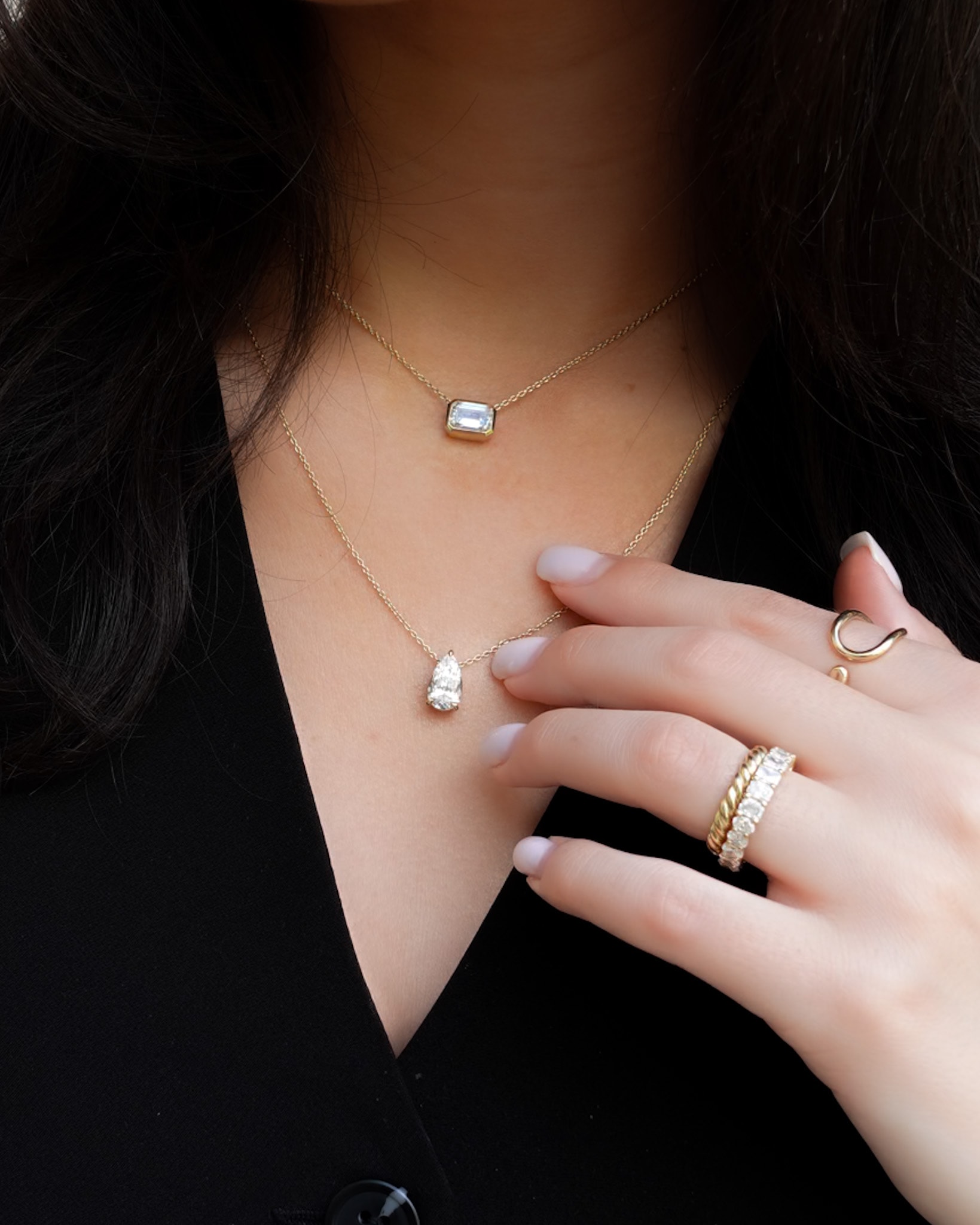
Shop our new Diamond Pendant Necklace collection to find your perfect solitaire pendant.
How to Choose the Best Lab-Grown Diamond Necklace
Choosing the perfect lab-grown diamond necklace for you or your loved one means considering a few different things like personal style, occasion, and your budget. Here are some tips to help you make the best choice:
-
Consider the Occasion: Think about when and where you plan to wear the necklace. For everyday wear, a solitaire pendant offers a timeless and versatile look. For special occasions, a tennis necklace can provide a more glamorous and eye-catching option.
-
Match Your Style: Select a necklace that complements your personal style. If you prefer minimalist designs, a simple solitaire pendant or three-stone necklace might be ideal. If you love bold and luxurious pieces, a halo or tennis necklace could be the perfect fit.
-
Budget: Determine your budget before shopping. Lab-grown diamonds offer great value, allowing you to choose a larger or higher quality stone within your price range. Remember to balance the Four Cs to ensure you're getting the best diamond for your money.
-
Chain Length and Style: Consider the length and style of the chain that comes with the necklace. Common chain lengths include 16, 18, and 20 inches, with 18 inches being the most popular for pendants. Chain styles, such as cable, box, and rope, can also impact the necklace's overall look and durability.
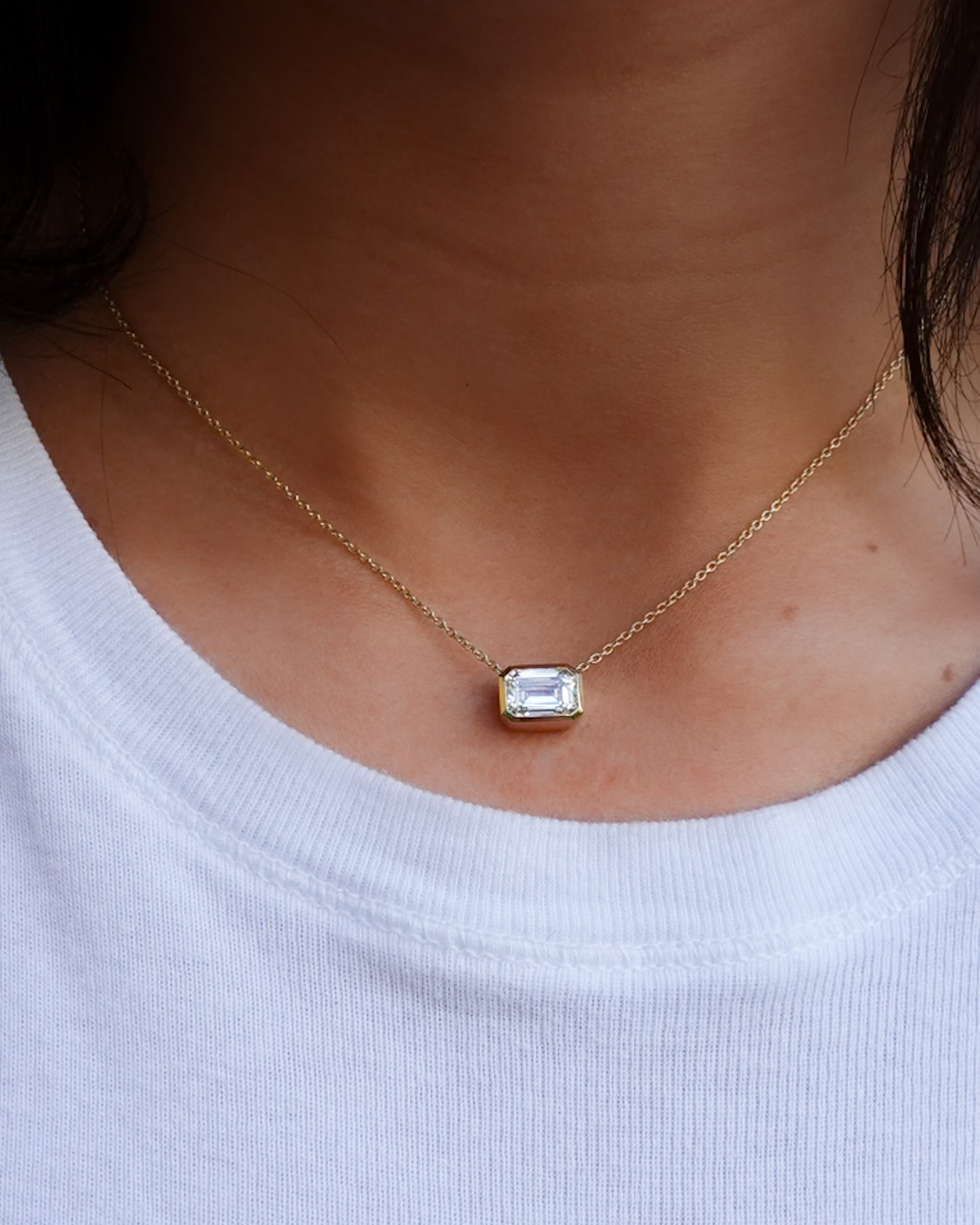
The East West Bezel Pendant Necklace with Emerald Cut Diamond, perfect for everyday wear.
Shop Lab-Grown Diamond Necklaces
A perfect blend of modern technology, ethical production, and timeless beauty, lab-created diamonds add something extra special to your jewelry collection. By understanding what makes a high-quality lab-grown diamond and exploring the various necklace styles available, you can find the perfect piece to suit your style and needs. Whether you're looking for a classic solitaire pendant or a glamorous tennis necklace, lab-grown diamonds are beautiful, brilliant, and budget-friendly.











Dejar un comentario